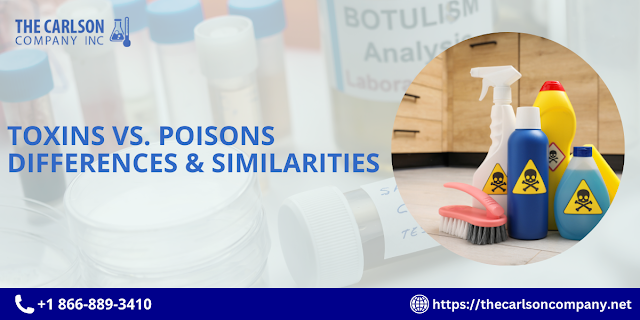Toxins and poisons are terms often used interchangeably, but they represent distinct concepts in the world of toxicology. Understanding the differences and similarities between toxins and poisons is crucial for comprehending their effects on human health and the environment. In this article, we will explore the nuances of toxins and poisons, addressing common questions and providing clarity on their classification, examples, symptoms, and implications for human health.
Are toxins and poisons the same?
Toxins and poisons are often mixed up, although they have distinct sources and ways of action. Toxins are compounds generated by living species such as plants, animals, fungi, and bacteria that cause harm to other organisms. Poisons, on the other hand, are chemicals, natural or manmade, that are harmful to living beings and can cause disease, damage, or even death.
Are all toxins poisons?
Not all toxins are poisons, as toxins may only be harmful to certain organisms or under specific conditions. For example, the venom produced by a snake is toxic to its prey but may not necessarily be harmful to humans unless injected into the bloodstream. Similarly, certain chemicals produced by plants may have toxic effects on insects but pose no threat to humans unless ingested in large quantities.
What are some examples of toxins?
Toxins encompass a wide range of substances, including chemicals, proteins, and organic compounds, that can exert harmful effects on living organisms. Some common examples of toxins include:
- Cyanotoxins produced by certain species of algae, which can contaminate water sources and cause adverse health effects in humans and animals.
- Mycotoxins produced by fungi, such as aflatoxin produced by Aspergillus species, which can contaminate food crops and pose a risk to human health if consumed.
- Plant toxins, such as ricin found in castor beans and solanine found in green potatoes, which can cause poisoning if ingested.
- Bacterial toxins, including botulinum toxin produced by Clostridium botulinum, which can cause botulism when consumed in contaminated food.
What are some examples of poisons?
- Heavy metals, such as lead, mercury, and arsenic, which can accumulate in the body over time and cause adverse health effects.
- Pesticides and insecticides, such as organophosphates and carbamates, which are used to control pests but can be toxic to humans and wildlife.
- Pharmaceutical drugs, such as opioids and sedatives, which can be harmful if misused or taken in excessive doses.
- Household chemicals, including cleaning products, bleach, and ammonia, which can cause poisoning if ingested or inhaled.
What are the symptoms of toxins in your body?
- Nausea, vomiting, and diarrhea
- Headaches and dizziness
- Difficulty breathing or shortness of breath
- Skin irritation or rash
- Abdominal pain or cramping
- Fatigue and weakness
- Changes in heart rate or blood pressure
- Neurological symptoms, such as confusion or seizures
What are the symptoms of poisons in your body?
- Nausea, vomiting, and diarrhea
- Abdominal pain or cramping
- Headaches and dizziness
- Difficulty breathing or respiratory distress
- Changes in heart rate or blood pressure
- Seizures or convulsions
- Loss of consciousness or coma
- Skin irritation, burns, or discoloration
List of toxins for humans:
- Cyanotoxins
- Mycotoxins
- Plant toxins
- Bacterial toxins
- Chemical toxins (e.g., pesticides, heavy metals)
List of poisons for humans:
- Heavy metals (e.g., lead, mercury, arsenic)
- Pesticides and insecticides (e.g., organophosphates, carbamates)
- Pharmaceutical drugs (e.g., opioids, sedatives)
- Household chemicals (e.g., cleaning products, bleach, ammonia)

Comments